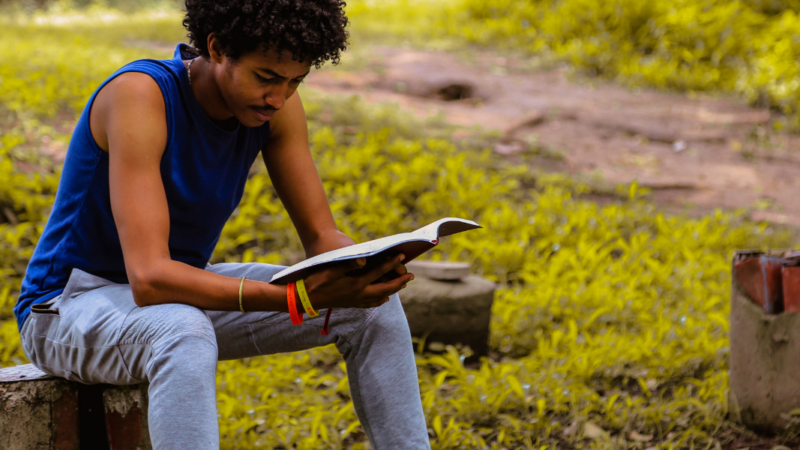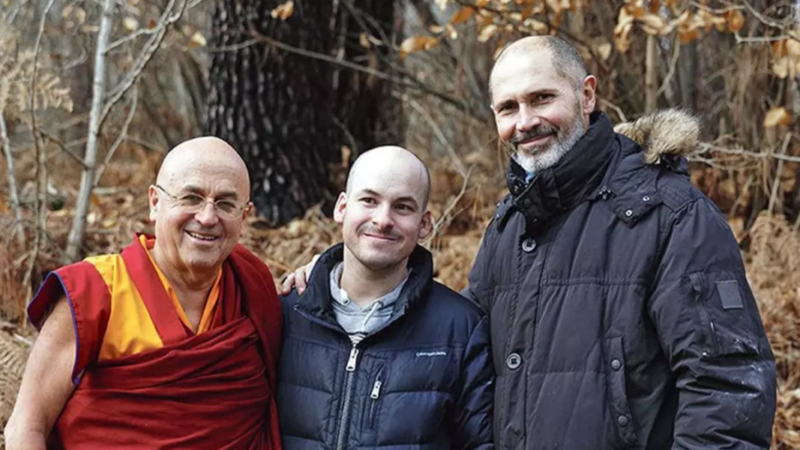Recognizing Your Blind Spots

Blind spots, by nature, aren’t seen by you, and cause you to behave unconsciously in ways that have impact on yourself, others, and the world around you. Blind spots are not areas you are familiar with that you are ‘working on’ – qualities you are developing – for example, trying to be more patient with your kids or more loving with your partner. Those qualities may be related to blind spots, but that is not what I’m addressing here. Blind spots are literally what you DON’T see about yourself.
Have you ever had trouble taking in some piece of information – in a talk or a book you’re reading, or sitting on your therapist’s couch? Usually it’s a seemingly innocuous and simple piece of information, but you just can’t get it, or hear it. It’s like you’re going fuzzy. That is a good indication of a blind spot trying to come into the light.
Or perhaps even worse, you keep getting the same feedback from your partner, your coworkers, and even the generalized world around you keeps holding up the same mirror. But it doesn’t quite make sense. You actually can’t really hear or see it. Or even if it makes sense intellectually, it just doesn’t seem necessarily relevant or important enough to demand your attention. Even though you’re hearing the information with your two ears, it flies right past you in terms of actually sticking in your brain, your being, your heart. It actually does not compute. Another signal that it may be a blind spot!
What we tend to end up with as we become adults is an imbalanced view of ourselves that plays handily into the creation and maintenance of our blind spots. What if you saw this mechanism at play, and then saw the pain and suffering you add on top of it? We usually do this in two ways: by personalizing it all and making ourselves either too big for our britches or conversely, unworthy of love and care. This is what I mean by an ‘imbalanced’ self view: too big or too small, over-amazing or under-good-enough. What if you had the courage and humility it would take to admit and embrace your actual place in the world? Even if that means it’s an amazing place in the world? It doesn’t have to be small and hidden just because we are humble and aware. But we are at home.
This is what I mean by learning how to live an undefended life. We aren’t propping up a flimsy ideal of who we think we should or shouldn’t be, or who we think others want us to be. We just are who we are, at home in our own skin, blemishes and all. And we inhabit ourselves so much so that our gifts fall out of us necessarily, rightfully, and with ease.
What if being yourself isn’t essentially about finding your voice, your true calling, your best self, your most significant offering to the world, but instead is about learning to become at home in the world – your world? Learning to become a simple, content, good human being. With no promises on the outcome. Just for the sake of it.
Looking for more great reads?

Excerpted from The Blind Spot Effect by Kelly Boys.
 Kelly Boys directed the launch of Google’s “Search Inside Yourself” leadership training program for neuroscience-based emotional intelligence and mindfulness. She’s taught war veterans, women in prison, cancer survivors, those with substance abuse addictions, humanitarian workers, and psychotherapists. She lives in Boulder, Colorado. More at kellyboys.org.
Kelly Boys directed the launch of Google’s “Search Inside Yourself” leadership training program for neuroscience-based emotional intelligence and mindfulness. She’s taught war veterans, women in prison, cancer survivors, those with substance abuse addictions, humanitarian workers, and psychotherapists. She lives in Boulder, Colorado. More at kellyboys.org.
The traveler of aloneness
A friend who regularly reads my personal blog asked if I would comment on what I saw as the difference between what she described to me as ‘loneliness’ and a related experience she referred to as ‘aloneness.’ Here is an excerpt of what emerged from our conversation…
At times, a very familiar sense of ‘loneliness’ can begin to color your world. You may wonder if it will ever go away, when it will yield to your deep longing for connection, and why all the work on yourself has not yet transformed the despair. The feeling of loneliness is a reminder of separation, and has a way of cutting into the aliveness of immediate experience.
The reality of ‘aloneness’, on the other hand, is translucent, in a way, and vibrantly alive. Despite your connection with others, you are asked to make the journey of the heart alone. No one can experience life for you, love and be loved for you, embrace and feel your tender heart for you, or die for you; likewise, you for them.
The traveler of aloneness is at home in this type of environment—and remains committed to it—knowing that organizing her reality around love will almost always trigger the experience of tender vulnerability and penetrating, transformative sadness. Living in the burning alive field of aloneness is so open, so unknown, and so unbearably touching; it is always uncertain and forever without ground or reference point. It reveals the truth that we can never fully look to the known to tell us who we are or anything certain about the nature of love. For love is of the unknown, infinitely creative, and emerging as a firestorm of grace in the radiant here and now.
Within the mandala of purifying aloneness, we know that at any moment our hearts may break, that we may fall in love in the most surprising way, that old dreams are sure to crumble, that what we thought we ‘knew’ *will* dissolve in front of our eyes, and that we *will* inevitably be asked to meet deep waves of feeling and sensation. As we commit to the very embodied path of the heart, only one thing is certain, really: that *everything* that has yet to be metabolized in our somatic environment will come on display, especially in intimate relationship, as it is seeking wholeness and integration.
There is a part of us that knows that as we open in this way, we will no longer be able to avoid the terror of intimacy, the surety of complete exposure, and the reality of crushing aliveness. We may realize that, without our conscious knowing, we have taken some forgotten vow to turn all the way into the preciousness of this life, willing to enter directly into such achy tenderness, into suffering, into penetrating melancholy, into the darkness, and into naked vulnerability—guided only by the unknown and by a love from beyond. It is not easy to live in such an open and unguarded way, but here we are: We have come here to give our hearts to others and to this world.
Though related, the experience of ‘loneliness’ is usually borne out of a resistance to our present experience—a subtle (or not so subtle) abandonment of feelings of grief, sadness, hurt, vulnerability, and shame. In our early environment, certain feelings were simply unsafe to touch, hold, and express—there was no true home made available for them. Because we are wired to do whatever we must to maintain the critical tie to our caregiving surround, we very intelligently and creatively chose to disembody and split off from these wild movements of fierce grace within. This was a very healthy, short-term strategy for a little boy or girl, yet here we are, several decades later, and burning to know the aliveness and mysteries of lover and beloved in this world.
When we are unable/ unwilling to meet these primordial companions—and are not able to stay with, hold, and metabolize them within our own somatic immediacy—we feel cut off from life, lonely, and disconnected. We yearn and long, at the deepest levels, to meet whatever guests appear in this sacred body, for we intuit that each is a special doorway Home. And we become lonely when we are not able to do so. It is the melting of these wounds and tangles that becomes the essence of the path of re-embodiment and opening the heart. The only way out is through; and the only way through is by love.
It is so bittersweet, really. Being an open-hearted human, who is always and eternally both broken and whole, can feel so fragile. Our old friends sadness, grief, jealousy, hopelessness, and raw vulnerability are so often sent away, out the back door of our hearts, and into a lonely forest. This is sad. Please, don’t go, friends! Stay close! Let us keep the door open to these ones, moment-by-moment crafting a warm home and safe refuge for the entirety of what we are. For in doing so, the path from loneliness to aloneness will become illumined, and we will provide safe passage for love in this world.

The Yoga of Awakening – with Seane Corn
We are so happy to present The Yoga of Awakening series with yogini and friend Seane Corn, with the first DVD entitled, Body-Mind Flow.
With this three-volume training series, Seane makes available for the first time her complete program for entering the deeper dimensions of #yoga—and discovering our own vast capacities of consciousness,#empowerment, and connection. Each DVD guides us into a unique realm of consciousness—the physical-mental, the emotional-energetic, and the psychic-symbolic—to discover our full potential in each dimension.
Volume I, Body-Mind Flow, teaches the foundational practices of the series. DVD One provides all-level instruction in #Vinyasa flow yoga and on awareness of the body for inner discovery and healing. DVD Two offers more advanced practice to stabilize your foundation, deepen the body-mind connection, and release tension. With precise and easy-to-follow guidance, you’ll learn how to:
– Build each pose from the ground up while tuning into the body-mind
– Harmonize movement, breathing, and awareness
– Work with your physical “edges” to release stuck emotions
– Create strength and well-being—physically and spiritually
Learn more @ Sounds True.com: http://bit.ly/RcUolD

The Simple Magic of a Book
One of the gifts of isolation, solitude, and social distancing is the opportunity to reconnect with pieces of soul and strands of vision that have become lost in the busyness of our ordinary lives.
Reading for many has become a lost art. We can become so used to turning on the news, scrolling through Facebook, becoming lost in hours of YouTube or Netflix, or fused with one electronic device or another. Nothing wrong with any of these, but at times an alternative portal will open.
To take a book and find a place within your home or under a tree or out in the park and go on a pilgrimage with it. Ask the stars to help you to find a place to just be for a while and open to revelation.
It need not be a “spiritual” book, though of course those are fine, too. A book of poetry, a novel, a book of art history, or of mythology.
Allow its images to come alive, its metaphors, its characters… step into the poetic landscape with the figures and enter a state of receptivity and play. Sense what they are sensing, feel what they are feeling as these correspond with the internal others dancing within you.
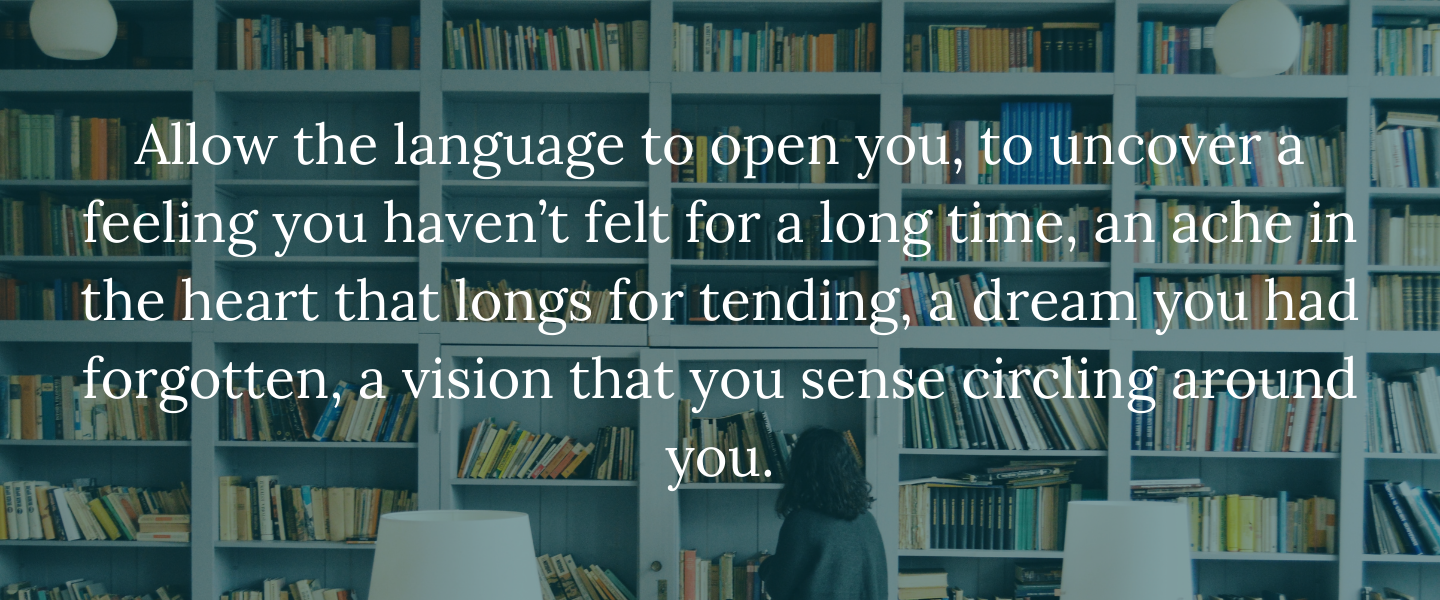
Not necessarily reading for “information,” but for communion. Allow the language to open you, to uncover a feeling you haven’t felt for a long time, an ache in the heart that longs for tending, a dream you had forgotten, a vision that you sense circling around you.
Read a paragraph or two and close the book. Enter the interactional field – with the natural world, with the visions, figures, moods, feelings, and images that seek your attention, your curiosity, your care, and just a moment of your being-ness.
We can so easily forget the magic of this place, of the imaginal realms, of those liminal places in between the physical world of matter and the transcendental realm of pure spirit. In the liminal we can dance and play and see and perceive and sense and intuit something holy.
A good book can help us do this, can serve as a companion as we step into uncharted territory.
Reading has been such an important part of my life. My books are my friends, lovers, allies, guides, and they also challenge me, break me open, tenderize and marinate me in the Unknown. They reveal how little I know about this world, this soul, this heart, this place, and the unique opportunity to be here. I find this so lifegiving.
I fantasize that perhaps in other worlds there are no books. That is sad to think about. For me, at least.
This blog post originally appeared on Matt Licata’s blog, A Healing Space. Redistributed with permission.
 Matt Licata, PhD, is a practicing psychotherapist and hosts in-person retreats. His work incorporates developmental, psychoanalytic, and depth psychologies, as well as contemplative, meditative, and mindfulness-based approaches for transformation and healing. He co-facilitates a monthly online membership community called Befriending Yourself, is author of The Path Is Everywhere, and is the creator of the blog A Healing Space. He lives in Boulder, Colorado. For more, visit mattlicataphd.com.
Matt Licata, PhD, is a practicing psychotherapist and hosts in-person retreats. His work incorporates developmental, psychoanalytic, and depth psychologies, as well as contemplative, meditative, and mindfulness-based approaches for transformation and healing. He co-facilitates a monthly online membership community called Befriending Yourself, is author of The Path Is Everywhere, and is the creator of the blog A Healing Space. He lives in Boulder, Colorado. For more, visit mattlicataphd.com.
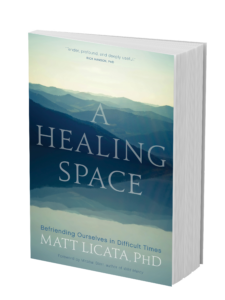
Learn More
Sounds True | Amazon | Barnes & Noble | Bookshop | Indiebound
Meet a Coauthor of . . . Freedom for All of Us
The Author
Matthieu Ricard is a Buddhist monk, humanitarian, and one of three authors of Freedom for All of Us: A Monk, a Philosopher, and a Psychiatrist on Finding Inner Peace, available in November, 2020. He is also the author of several other books, including The Monk and the Philosopher, Happiness, and Altruism. He is a major participant in research collaboration between cognitive scientists and Buddhist practitioners. Ricard is a noted translator and photographer, and has founded humanitarian projects in India, Tibet, and Nepal. For more information, visit karuna-shechen.org.
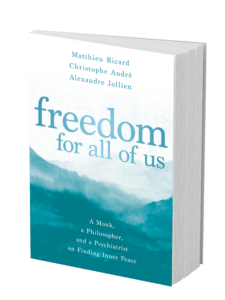
The Book
With their acclaimed book In Search of Wisdom, three gifted friends—a monk, a philosopher, and a psychiatrist—shed light on our universal quest for meaning, purpose, and understanding. Now, in this new in-depth offering, they invite us to tend to the garden of our true nature: freedom.
Filled with unexpected insights and specific strategies, Freedom for All of Us presents an inspiring guide for breaking free of the unconscious walls that confine us.
Send us a photo of your sacred space.
[Pictured here is the] Shechen Monastery in Nepal, where I live a good part of the year:
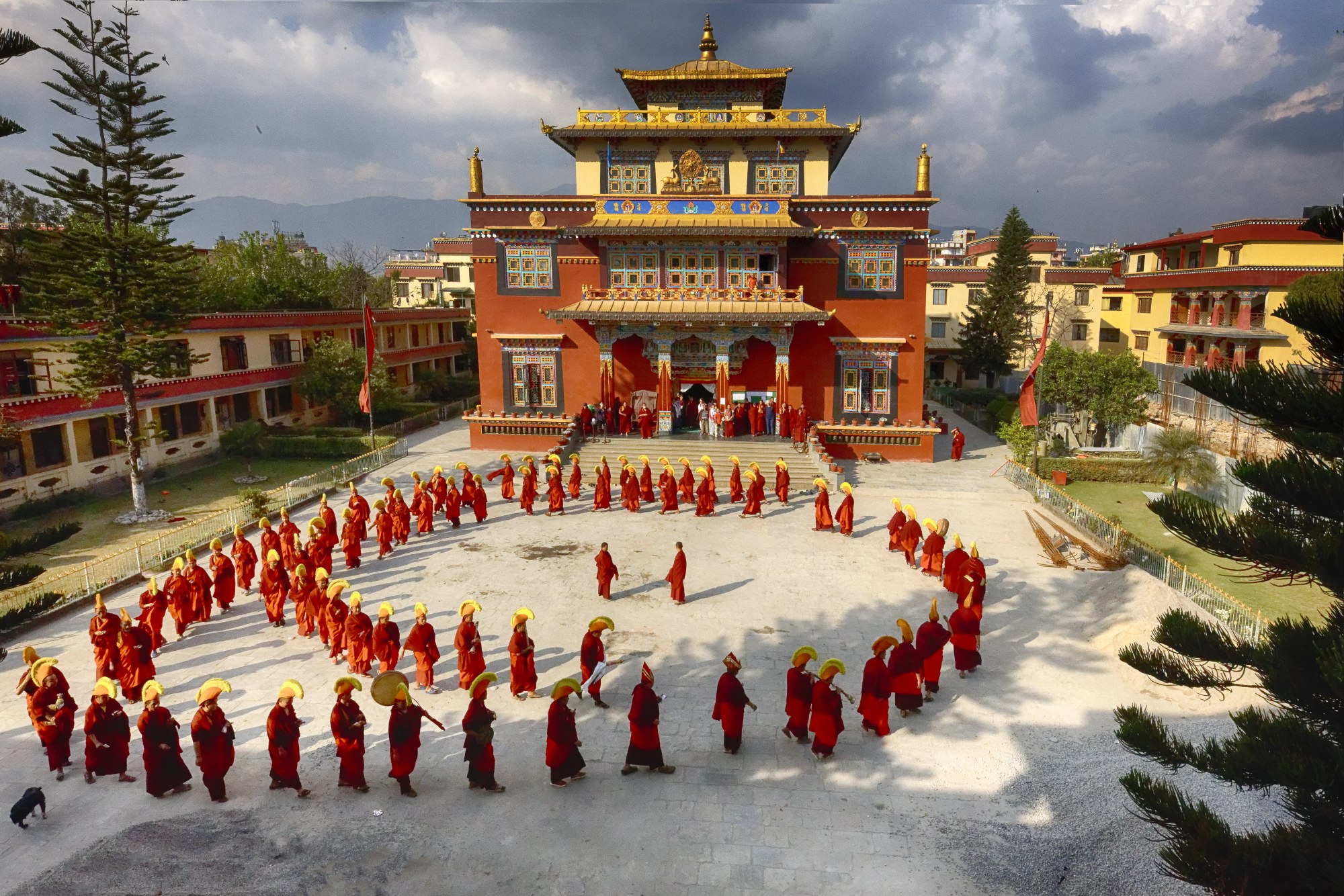
[And] the views from my hermitage in Nepal:
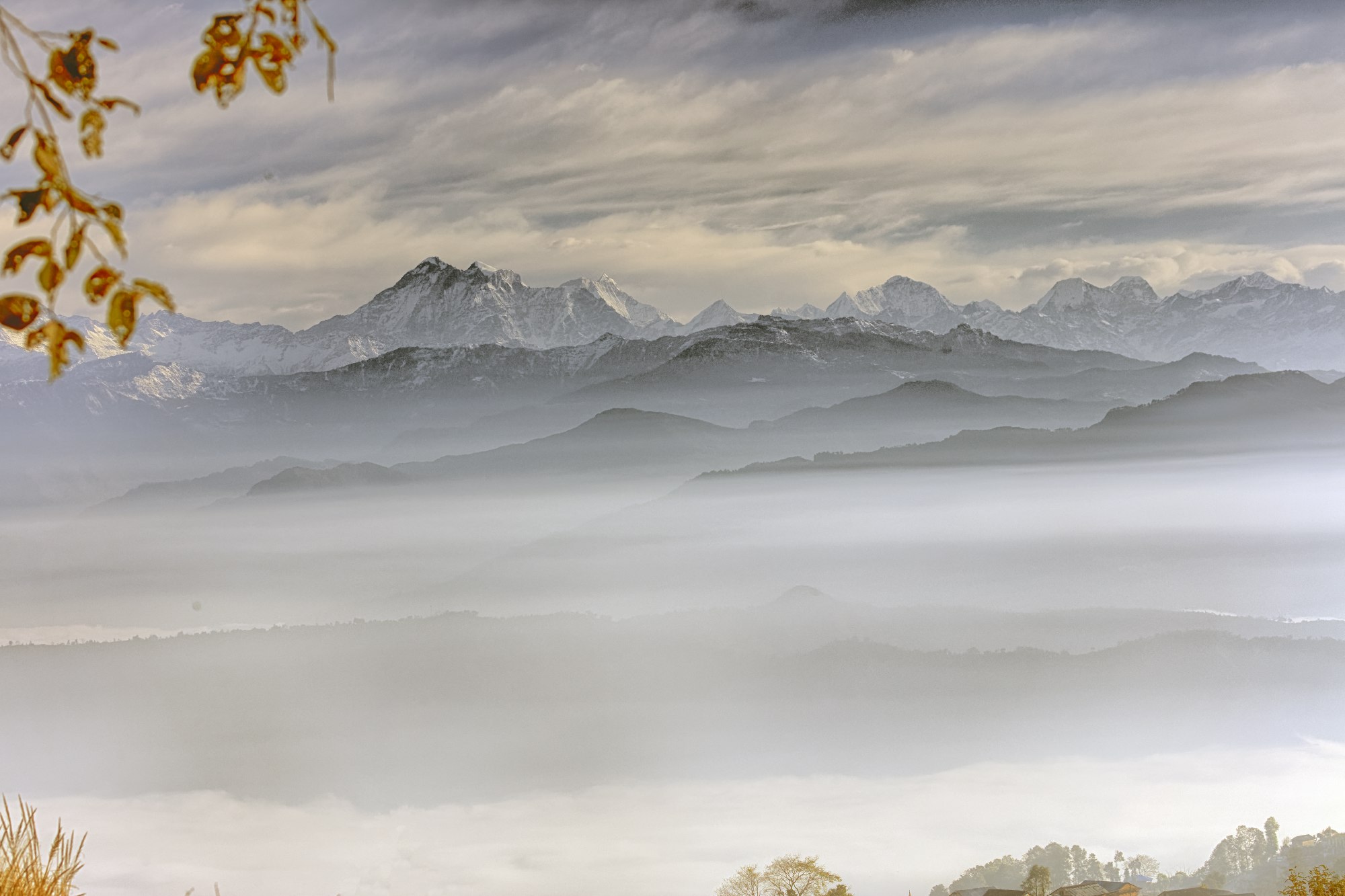
‘
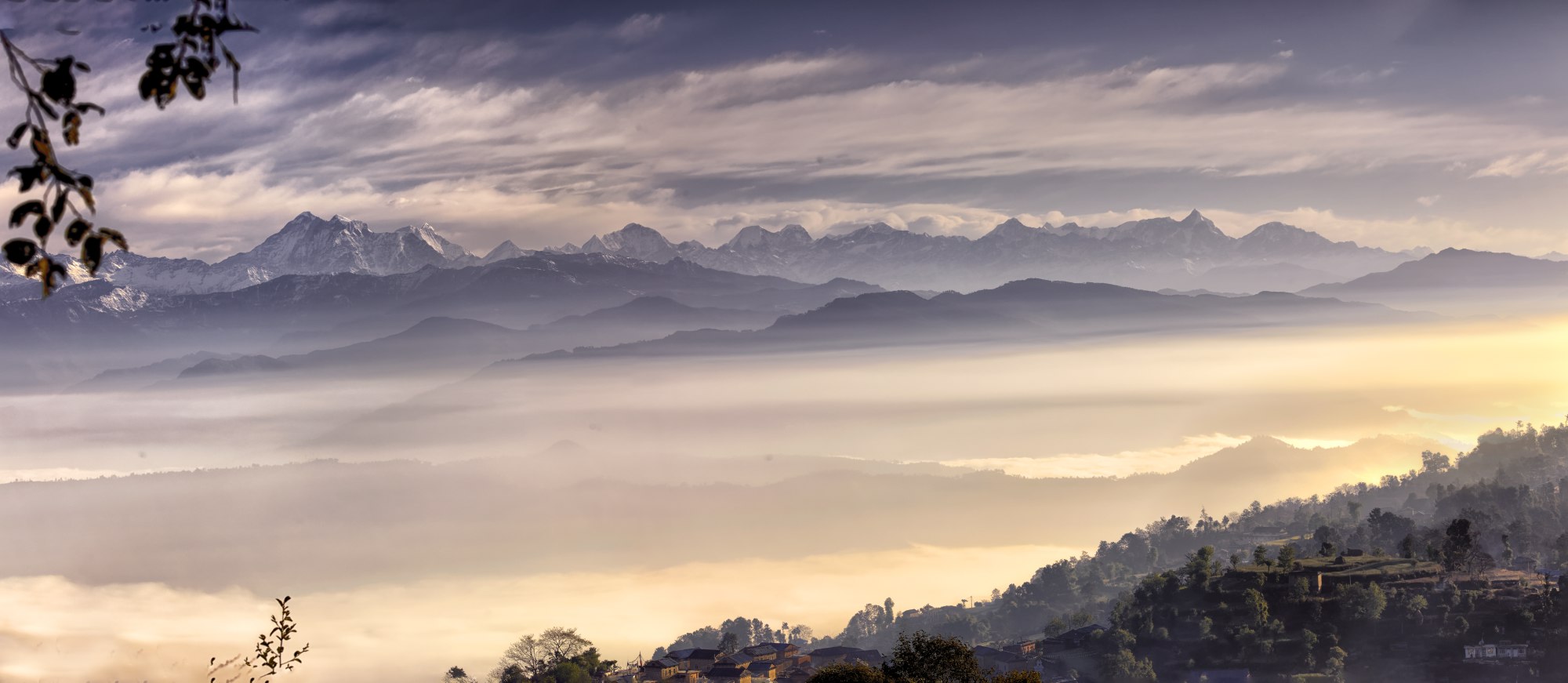
If you could invite any three transformational leaders or spiritual teachers (throughout time) to dinner, who would they be and why?
I do not have dinner and he does not either, but if I had to choose to spend an hour quietly with someone alive today, it would be His Holiness the Dalai Lama. [He is] someone of boundless compassion and wisdom, who treats every sentient being—from the person who cleans the floor at the hotel when he travels, to a head of state—with the same kindness, respect, and attention.
As for [two people] who [are no longer] in this world, I would give everything to spend another hour in the presence of my two main spiritual teachers: Kangyur Rinpoche and Dilgo Khyentse Rinpoche, who inspire every instant of my life.
Has your book taken on a new meaning in the world’s current circumstances? Is there anything you would have included in your book if you were writing it now?
Many people have indeed faced great hardship; being sick, left alone, and having lost a dear one. But for those who simply had to be with themselves and a few kin, I was quite surprised to see how difficult they found [it] to just be with their own minds for extended periods of time. It seemed that it was such a new situation and they had few tools to deal with it.
As a contemplative, I value tremendously [the] time spent alone in my hermitage in the Himalaya[s], cultivating fundamental human qualities that allow me to slowly become a better human being. I believe that among those qualities, inner freedom and compassion are two key factors and that, therefore, our dialogue [in Freedom for All of Us] is quite timely. Most of the subjects that we reflect upon seem very relevant [during] these troubled times and I hope that they will be useful!

Learn More
Sounds True | Amazon | Barnes & Noble | Bookshop | IndieBound
Help Children Relax at Bedtime

Looking for more great reads?
Excerpted from Good Night Yoga. Written by Mariam Gates and illustrated by Sarah Jane Hinder.
Mariam Gates holds a master’s in education from Harvard University and has more than 20 years’ experience working with children. Her renowned Kid Power Yoga™ program combines her love of yoga with teaching to help children access their inner gifts. See kidpoweryoga.com.
Illustrator Sarah Jane Hinder creates acrylic artwork for a variety of children’s book, including Good Night Yoga, Good Morning Yoga, The Three Little Pigs, and The Elves and the Shoemaker. She lives in Manchester, England, with her husband and two chihuahuas. See sarahjanehinder.com.


